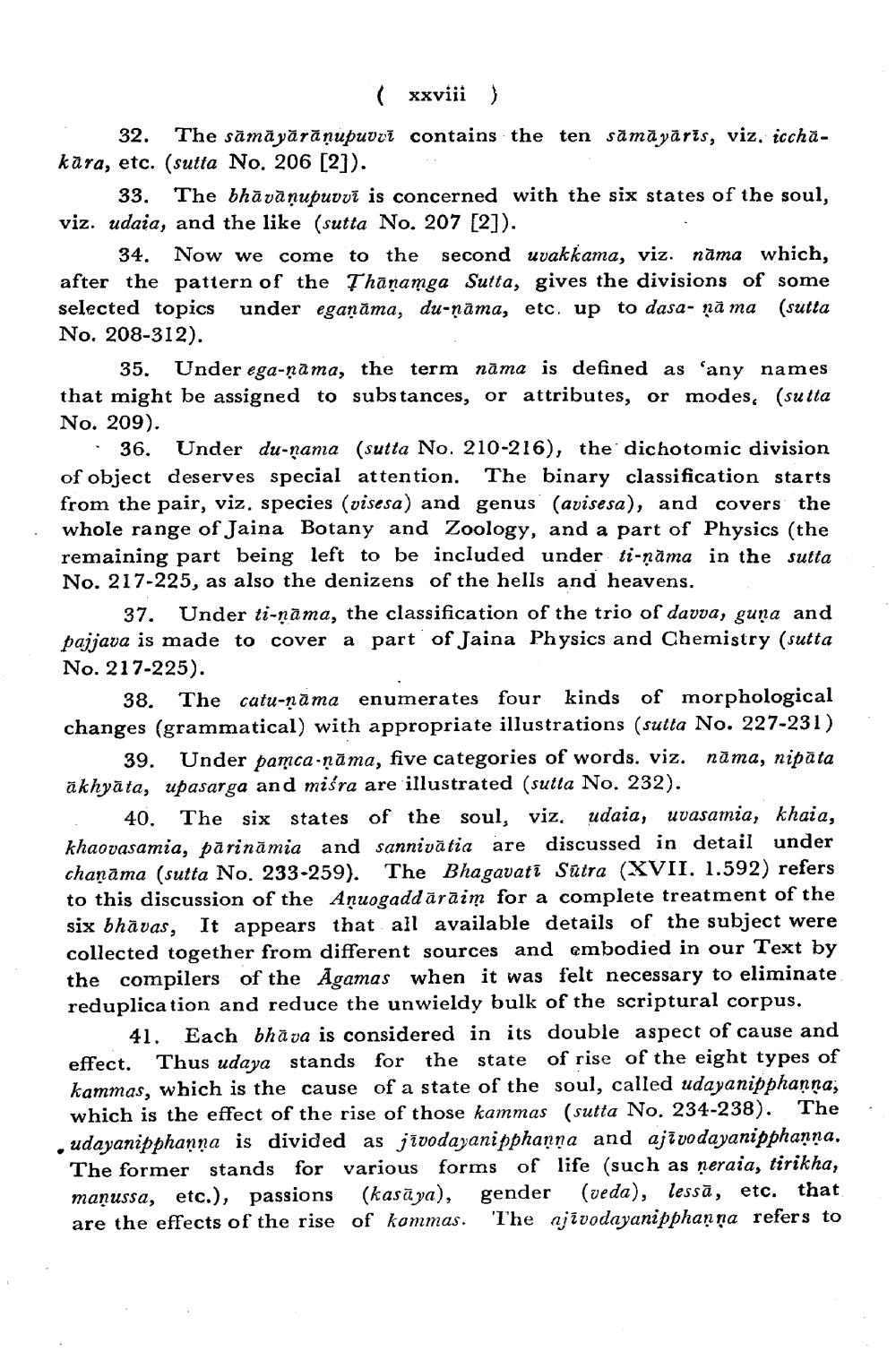________________
( xxviii)
32. The sămäpäräņupuvut contains the ten sämāyāris, viz, icchakära, etc. (sutta No. 206 [2]).
33. The bhāvānupuvvī is concerned with the six states of the soul, viz. udaia, and the like (sutta No. 207 [2]).
34. Now we come to the second uvakkama, viz. nāma which, after the pattern of the Thanamga Sutta, gives the divisions of some selected topics under eganāma, du-nāma, etc. up to dasa- ņāma (sutta No. 208-312).
35. Under ega-ņāma, the term näma is defined as “any names that might be assigned to substances, or attributes, or modes, (sutta No. 209).
36. Under du-nama (sutta No. 210-216), the dichotomic division of object deserves special attention. The binary classification starts from the pair, viz. species (visesa) and genus (avisesa), and covers the whole range of Jaina Botany and Zoology, and a part of Physics (the remaining part being left to be included under ti-nama in the sutta No. 217-225, as also the denizens of the hells and heavens.
37. Under ti-ņāma, the classification of the trio of davva, guna and pajjava is made to cover a part of Jaina Physics and Chemistry (sutta No. 217-225).
38. The catu-ņāma enumerates four kinds of morphological changes (grammatical) with appropriate illustrations (sutta No. 227-231)
39. Under pamcaiņāma, five categories of words. viz. nama, nipāta akhyāta, upasarga and miśra are illustrated (sutta No. 232).
40. The six states of the soul, viz, udaia, uvasamia, khaia, khaovasamia, pārināmia and sannivātia are discussed in detail under chaņāma (sutta No. 233-259). The Bhagavatī Sutra (XVII. 1.592) refers to this discussion of the Anuogadd ārāim for a complete treatment of the six bhāvas, It appears that all available details of the subject were collected together from different sources and embodied in our Text by the compilers of the Agamas when it was felt necessary to eliminate reduplication and reduce the unwieldy bulk of the scriptural corpus.
41. Each bhāva is considered in its double aspect of cause and effect. Thus udaya stands for the state of rise of the eight types of kammas, which is the cause of a state of the soul, called udayanipphanna; which is the effect of the rise of those kammas (sutta No. 234-238). The. udayanipphanna is divided as jīvodayanipphanna and ajīvodayanipphanna, The former stands for various forms of life (such as ņeraia, tirikha, maņussa, etc.), passions (kasaya), gender (veda), lessä, etc. that are the effects of the rise of kommas. "The ajivodayanipphan na refers to




